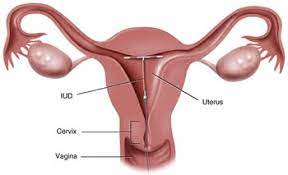In recent times, intrauterine devices (IUDs) have come increasingly popular as a dependable form of contraception. While these small, T- shaped devices are generally well- permitted, some women may witness unusual symptoms, including changes in discharge. It’s essential to understand what’s considered normal and when to seek medical advice. In this article, we’ll claw into the implicit causes of tissue discharge after IUD insertion and explore colorful scripts that women may encounter.
Can an IUD cause an abnormal discharge?
Before probing into specific types of discharge, it’s pivotal to address whether an IUD can indeed beget abnormal discharge. The answer is yes, but it’s important to note that not every case of discharge following IUD insertion is inescapably abnormal. The IUD, whether hormonal or copper- grounded, can impact the uterine terrain, leading to changes in discharge thickness and color. Still, if these changes are accompanied by concerning symptoms, it’s judicious to consult with a healthcare professional.
Gray Tissue Discharge after IUD Insertion
One uncommon but intimidating type of discharge that some women may witness after IUD insertion is argentine tissue discharge. This can be disturbing, as gray tinges may suggest infection. Still, it’s essential to separate between normal variations and implicit issues. In some cases, argentine tissue discharge could be a result of residual blood mixing with vaginal fluids. However, seeking medical attention is advised, If this persists or is accompanied by a foul odor.
Passing Blood Clots after IUD Insertion
Another concerning symptom that some women may face post-IUD insertion is passing blood clots. While some mild bleeding and clotting can be normal incontinently following insertion, patient and large clots might indicate a problem. This could range from a lost IUD to an infection. It’s pivotal to cover the size and frequency of blood clots and report any unusual patterns to a healthcare provider instantly.
Mucus Discharge after Copper IUD Insertion
Copper IUDs are known for their non-hormonal contraceptive effects. Some women, Still may notice changes in their discharge following the insertion of a copper IUD. Mucus- suchlike discharge can be a common circumstance and is frequently attributed to the body’s response to the foreign object. This type of discharge is generally considered normal and may drop over time as the body adjusts to the presence of the IUD.
Thick Brown Discharge after IUD Insertion
Thick brown discharge is another variation that women may witness after IUD insertion. This can be a result of the body expelling residual blood from the uterus. In utmost cases, this type of discharge is considered normal, especially in the days or weeks incontinently following insertion. Still, if it persists or is accompanied by other concerning symptoms, it’s judicious to consult a health care professional. It’s pivotal for women to be informed about the eventuality for tissue discharge after IUD insertion and to distinguish between normal variations and symptoms that bear medical attention.
Yellow Discharge after IUD Insertion
Yellow discharge can be a cause for concern as it may indicate infection. In some cases, the preface of an IUD can disrupt the normal balance of bacteria in the vagina, leading to an overgrowth of dangerous bacteria. However, itching, or vexation, If the yellow discharge is accompanied by a strong odor. Timely intervention can help the progression of an infection and insure optimal reproductive health.
Is It Normal to Pass Tissue After IUD Insertion?
The passage of towel after IUD insertion is a content that raises questions for numerous women. In utmost cases, small bits of tissue may be expelled as the body adjusts to the presence of the IUD. This is generally considered a normal part of the adaption process.
How Do I Know If I Have an Infection From My IUD?
Detecting an infection stemming from an IUD requires attention to specific symptoms. However, violent itching, or unusual pelvic pain, If you witness patient and foul- smelling discharge. Fever and flu- suchlike symptoms may also accompany an infection. Regular check- ups with your healthcare provider and prompt reporting of any concerning symptoms insure early discovery and applicable intervention if an infection is present.
How to Stop Tissue Discharge After Copper IUD Insertion
While some tissue discharge is normal after a copper IUD insertion, inordinate or bothersome discharge may prompt concern. Staying doused and maintaining good pelvic hygiene can help manage a normal discharge. However, consulting with a healthcare professional is pivotal, If the tissue discharge is accompanied by pain or appears abnormal. They can assess whether the IUD is duly placed and offer guidance on managing symptoms or, if necessary, recommend indispensable contraceptive options.
Conclusion
Experiencing tissue discharge after IUD insertion is fairly common as the body adjusts to the presence of the contraceptive device. In conclusion, while some changes in discharge are anticipated after IUD insertion, it’s pivotal for women to be watchful about any unusual or patient symptoms. Gray tissue discharge, passing blood clots, mucus discharge, thick brown discharge, and un-heroic discharge are all implicit variations, each carrying its own significance. Monitoring these changes and seeking prompt medical attention when necessary ensures that women can confidently navigate the post-IUD insertion period, fostering their reproductive health and overall well- being.



